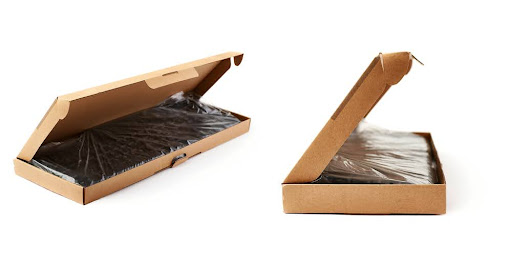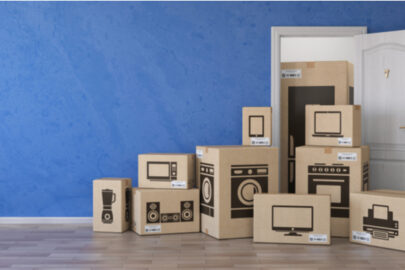So, how do you protect the devices that connect, educate and entertain? To help guide you through a safe and smooth journey, we’ve listed five dos and three don’ts when moving your electronic devices.
5 Things to Do When Moving Electronics
Careful planning and preparation will ensure your electronics stay safe on moving day. Here are five tips for packing and moving your devices:
1. Consider a Professional Packing Service
If you have many vulnerable electronics, like televisions, computers and audio equipment, hire an experienced packing service. This will prevent your electronics from sustaining damage even while being moved around your home or business. A reputable moving company that regularly handles delicate and sensitive equipment will know the best way to prepare and protect each item for its trip.
2. Keep All Components Together
Losing your remote or charger is frustrating enough in everyday life. Avoid frantically searching for an essential cord or controller after your move by keeping all of a device’s components together.
Package small items in a bag or box so they don’t scrape against the larger electronic device while in transit. Disconnect cables, wind and secure them with a twist tie or rubber band and place them in a plastic bag. Then, tape each bag of cables to the device they connect. When it’s time to unpack, you’ll have all your components in one place.
3. Record How Each Device is Connected
To avoid unpacking your electronics only to find that you don’t know how to reconnect them, pay attention to your current setup as you disassemble it. Wheaton World Wide Moving recommends that you take a picture of the cord configuration before you unplug.
Additionally, you may want to use colored stickers to simplify the reassembly process. For example, if you have a turntable and an equalizer that attach to the same receiver, put a different-colored sticker on each device. Then, mark the end of the cord that connects to each device with the same color.
4. Use Original Containers or Sturdy Packing Materials

If you have storage space, keep the original box and packing materials for new electronic devices. Because these packing materials fit each device exactly, they provide much better protection when moving.
If you don’t have the original packing crate, pack your electronics in a sturdy, well-padded moving box. Wrap TVs in bubble wrap or foam secured with packing tape and place them in a cardboard box. For larger TVs that won’t fit in a box, create cardboard corners to protect the ends. Never use newspaper to pack anything with a screen. Its abrasive texture could scratch the surface, and the ink could leave stains.
When preparing computers, hard drives and any data storage device, be sure to back up your files and securely store your passwords. Use anti-static bubble wrap to prevent damage from electric shock. If you use packing peanuts, choose larger-sized ones that won’t get stuck in vents or connection ports.
5. Unpack Your Electronics Early
Ensure that your electronics come out of their boxes sooner rather than later. The longer your devices stay in boxes, the more vulnerable they are to damage caused by the shifting and stacking that comes with unpacking.
When you unpack, ensure you have all the components before discarding the packing container and materials. Small items like a power cord or computer mouse can easily get lost in the shuffle.
3 Electronics Moving Mistakes to Avoid
Small mistakes can lead to potentially expensive damage. To move sensitive electronics across town or the country, avoid these three common errors:
1. Unlabeled Boxes
If you don’t have the original packaging for each device, label each box clearly. Note any extra components in the box, especially if you separate a cord or controller from its primary device. This can be especially beneficial for businesses if the person packing isn’t necessarily the one unpacking.
If you used colored stickers on the electronics, you can add them to your labels as an easy visual reminder of what’s in each box.
2. Don’t Leave Items Inside Your Devices
Always empty your devices before packing them up. Remove any discs from your music player or game console. Unplug all cords and store them separately. Take out any batteries or ink cartridges since these items can leak or overheat during your move.
3. Extreme Temperatures and Humidity
If you can’t move into your new location immediately and need to store your belongings, be careful where you put your electronics. Extreme heat or cold can cause electronics to degrade, and humidity can lead to corrosion or short circuits.
Choose a climate-controlled storage unit in a well-secured facility. Units on higher ground reduce the risk of water damage. Don’t place electronics underneath other items or allow boxes to be transported upside down.
Trust Wheaton to Move Your Electronics

Use these guidelines to prepare your electronics and ensure they arrive intact and ready to use at your new location. For help packing and transporting electronics of all kinds, trust Wheaton World Wide. Our experienced movers handle complex residential and corporate moves every day, including specialty items and delicate equipment. Contact your local Wheaton agent to learn more about our moving services.



